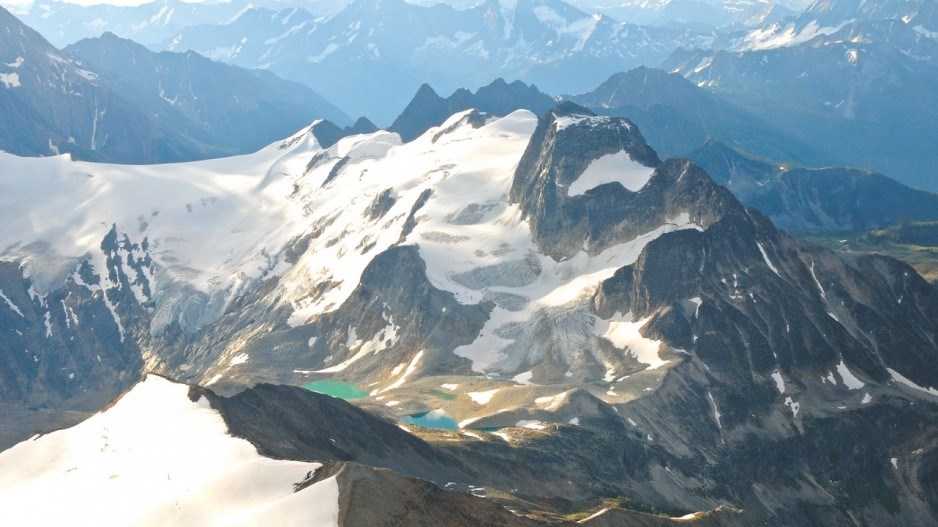Glacier Resorts Ltd.’s decision to end 30 years of working to create a year-round ski resort in B.C.’s Kootenays region offers a cautionary tale for aspiring resort developers in Valemount and near Squamish.
Glacier has agreed to an undisclosed payout to sell its ownership and development rights in its Jumbo Glacier Resort project, while clearing the way for resort opponent Ktunaxa Nation to use up to $16 million in federal funds, and about $5 million in other money, to create a protected Indigenous conservation area. Some of that money might flow to Glacier as part of the deal.
Glacier’s executives now join their counterparts in other development groups that long touted projects, such as Canoe Mountain in the Rockies and Cayoosh Mountain between Whistler and Lillooet, only to fold their tents.
“It’s a significant challenge to build an evergreen resort,” said retired ski-industry veteran Hugh Smythe, referring to new ski resorts on undeveloped land.
Smythe led the group that was awarded the rights to develop Blackcomb Mountain in 1978. In the 1990s and 2000s, he was president of Intrawest Resorts Holdings Inc.’s (NYSE:SNOW) resort operations, which included up to 13 sites across North America.
For Smythe, any prospective resort that hopes to succeed needs these key elements: road access (and ideally nearby air access), First Nations support, deep-pocketed financiers, a suitable mountain and a business plan that will please environmentalists.
While other municipalities in the region, such as Invermere and Rossland, protested Jumbo, one of its biggest failings was that the nearby Ktunaxa Nation strongly opposed the project, as did many environmentalists.
While the mountain would have what Smythe believes would be ideal year-round skiing, and backers seemed to have the financing, the project struggled with a remote location.
'Not a viable ski area'
Smythe told Business in Vancouver that two other significant proposals for ski resorts in B.C. also have what could be fatal flaws.
“Garibaldi at Squamish is not a viable ski area,” he said, referring to a project billed to eventually be a $3.5 billion all-season resort that is backed by the deep-pocketed Aquilini and Gaglardi families.
“It’s because of the quality of the terrain, the quality of the climate, quality of a whole lot of things. You would be at best replicating Cypress [Mountain] if you were lucky.”
Plans have been in the works at Garibaldi since at least 2003.
Project director Sabina FooFat touts her region’s road access and proximity to Vancouver International Airport, the involvement of the Squamish Nation as equity partners and a vision to build the resort to high environmental standards.
The project has an environmental assessment certificate that developers plan to apply to extend until 2026, FooFat said.
Regional support, however, is shaky.
Negotiations are ongoing with the Squamish Lillooet Regional District and the District of Squamish, and Squamish Mayor Karen Elliott told BIV that obstacles remain – “not the least of which is the impact on the highway and the regional transportation network.”
Elliott said she is concerned about the project’s potential social and economic effects on her district and impact on the local water supply, real estate and affordable housing.
Elliott also wants an assessment of how much it would cost her district’s taxpayers if the resort fails.
'Middle of nowhere'
Garibaldi at Squamish is not the only resort that has been long on the drawing board.
Valemount Glacier Destinations Ltd.’s has been proposing to build what could be a $200 million ski resort near Valemount, in east-central B.C., for more than a decade.
However, “Valemount is in the middle of nowhere,” Smythe said. The community’s tiny airport lacks scheduled flights and a control tower. It is a three-hour drive from Kamloops Airport, which is serviced by Air Canada and WestJet. It is also nearly a three-hour drive from Prince George Airport.
Pheidias Project Management vice-president Tommaso Oberti, who is a consultant on the project, defended the location. He noted it is about 80 minutes by car from Jasper, which he said could be the source of many visitors.
The nearby Simpcw First Nation is a partner in the Valemount project, which also has community support.
Early investors included Toronto real estate tycoon Greg Marchant and Toronto condo-marketing guru Hunter Milborne. Resource industry entrepreneur and North American Tungsten Corp. founder Stephen Leahy was a minor investor.
Combined, however, the capital committed is much less than $50 million.
Oberti said a scaled-down version of the project could be developed if between $50 million and $75 million is raised.
“If the money were to come in tomorrow, we would start construction this summer,” he said. “It would take a year to get the day lodge and initial gondola built, so you’re looking at the earliest possibility for skiers on the mountain being 2022.”
'A ton of money'
Smythe said that for a new resort to start attracting skiers, the upfront investment would have to be at least $100 million.
“You can’t build a rope tow, or a couple of fixed-grip lifts and think that you’re going to attract the numbers that you need,” he said.
“You’re going to have to put a ton of money into it. I’m talking about everything from the infrastructure, the whole works. There’s the road, the water, the sewer, the power – everything before you even start. Then there’s the lifts, trails, snowmaking and lodges and buildings, and everything like that.”
Indeed, after the Gaglardi family’s Northland Properties bought control of the emerging Revelstoke Mountain Resort in 2008, it invested at least $200 million in the mountain, Northland told BIV in a statement.
“You’ve got to get a fair number of skiers over the first few years to make a $100 million resort a viable venture,” said Smythe. “It’s extremely difficult.”



